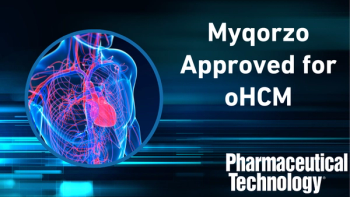
PTSM: Pharmaceutical Technology Sourcing and Management
- PTSM: Pharmaceutical Technology Sourcing and Management-08-04-2011
- Volume 7
- Issue 8
Improving the Delivery of Maternal and Children's Healthcare Services
The US Agency for International Development, the government of Norway, the Bill and Melinda Gates Foundation, Grand Challenges Canada, and The World Bank partner to bring innovative solutions to improve maternal and children’s health in the developing world.
Global health solutions involve a myriad of ways to improve access to medicines and healthcare services in the developing world. This need is particularly important in maternal and children’s health, where the health of mothers and children are linked, and raising the bar in healthcare benefits not only them but also the community at large.
One recent important initiative to improve maternal and child health in the developing world is a public–private project, Saving Lives at Birth: A Grand Challenge for Development, which was launched in March 2011 to seek innovative prevention and treatment approaches for pregnant women and newborns in rural, low-resource settings. The project is a partnership between the US Agency for International Development (USAID), the government of Norway, the Bill & Melinda Gates Foundation, Grand Challenges Canada, and the World Bank. These partners are providing nearly $14 million for this grant program's first round of funding and have a commitment of investing at least $50 million in projects during the next five years.
The Saving Lives at Birth: A Grand Challenge for Development is seeking new technologies, new service-delivery models, and other approaches to improve healthcare services at the time of birth. The call elicited more than 600 submission on a global basis, and in late July 2011, 77 finalists participated in the final stage of the competition, which involved displaying their ideas in an open marketplace and establishing connections with a community of innovators. Of the 77 finalists, 19 nominees for awards were recognized for the most promising solutions to address the causes of maternal and newborn deaths in the developing world.
“We have a tremendous opportunity to take advantage of all of the changes that are occurring in the world today and put them to work on behalf of development,” said US Secretary of State Hillary Clinton, who spoke at an event in Washington DC, in late July to recognize the nominees. “We know that it’s moving so quickly. There is no way to keep up with the fast-paced global innovation contest that is happening on products and goods and services, but we can do our part to make sure that we harness all of that scientific and technological capacity on behalf of the poor and the needy,” she said. “So in reaching out to the global community, NGOs, international partners, and working with likeminded governments and foundations and other institutions, we have established this program of Grand Challenges. And few challenges are as persistent or heartbreaking as the health of mothers and children because we are well aware that the single most critical window for maternal and child health occurs from the onset of labor to 48 hours after childbirth,” noted Clinton.
In making her comments, Clinton pointed to the extent of the problem in maternal and child mortality, but also to some positive signs of improvement. She noted on a global basis in 2011, one woman dies every two minutes during childbirth. A woman in sub Saharan Africa is 136 times more likely to die in childbirth than one in a developed country. In 2009, 2.6 million children were stillborn, and one million newborns die every year in the two days after birth, according to the World Health Organization. “We know this can be impacted when pregnant women have access to adequate nutrition and prenatal care, lifesaving medicines, [and] skilled health workers when they do give birth,” said Clinton, pointing to recent progress. From 1990 to 2008, the global maternal mortality rate dropped by 34%, and in certain countries, the decline was greater, such as in Bangladesh, where it declined by 40%, and in Nepal, where it dropped 50%.
To reduce maternal and child deaths, Clinton pointed to several factors. “We identified three major barriers to saving lives at birth,” said Clinton. “First, a lack of medical technologies appropriate for the community or clinic settings. Second, a shortage of trained, equipped caregivers in positions to help. And third, a lack of demand; too many mothers still don’t know about the care they need and where and how they can find it.”
Clinton pointed to solutions, such as advances in drug delivery, which can make a difference in reducing deaths at childbirth. She cited the potential benefit of switching from injectable drug delivery, which requires sterile equipment, trained medical personnel, and a cold chain, to aerosol-spray drug delivery through disposable devices. To mitigate mother-to-child transmission of HIV/AIDS, she noted the importance of increasing access to medicines to newborns within the first 24 hours of life. Since such medication is typically available only through clinics, which may not be accessible, she cited work by researchers in developing a pouch containing medicines that can be carried by mothers for months and used at the time of birth to deliver need medication.
The resourcefulness of such approaches was a key part of the Saving Lives at Birth: A Grand Challenge for Development. The 19 nominees for awards from the challenge are as follows:
• Operative Experience (Elkton, MD) for its simulation-based training for emergency C-sections
• Healthpoint Services (Secunderabad, India) to apply low-cost health and information technologies at the community and clinic level for integrated maternal and neonatal health delivery in rural India
• Program for Appropriate Technology in Health (Seattle, WA) to increase accessibility to less invasive lung support equipment for neonates in low-resource settings
• Baylor College of Medicine (Houston, TX ) for primary prevention of periodontal disease in relation to preterm birth in Malawi
• Moi University School of Medicine (Eldoret, Kenya) for improving community-based accountability for maternal and newborn health
• Monash University (Clayton, Australia) for an alternative means of delivering oxytocin to women in resource-poor countries
• Jhpiego Corp. (Baltimore, MD) for development of an e-partogram
• Duke University (Durham, NC) for its innovation to reduce mother-to-child transmission of HIV
• Zoe Alexander (Nairobi, Kenya) for a novel mobile application
• University of British Colombia (Vancouver, Canada) for an innovative phone oximeter
• Save the Children Federation (Westport, CT) for an human energy-powered fetal heart rate monitor and phone-based mortality audit
• Population Council (New York, NY) for a mobile clinical-assessment service, Baby Monitor
• Johns Hopkins University (Baltimore, MD) for an easy-to-use identification system for early and late preterm infants
• WHO (Geneva, Switzerland) for a low-cost instrument for assisted vaginal delivery
• Diagnostics for All (Cambridge, MA) for low-cost, point-of-care microfluidic diagnostics
• Partners for Development (Silver Spring, MD) for a reliable, market-driven emergency transport solution for pregnant women
• Hospital for Sick Children (Toronto, Canada) for an approach to supply micronutrients to pregnant women
• Fincon (Islamabad, Pakistan) for a microhealth franchise system
• William Marsh Rice University (Houston, TX) for a low-cost, bubble continuous positive airway pressure system.
“So we have lots of great ideas that are here, and to the 600 entrants all over the world and to the 77 finalists and the eventual winners, my message is the same: Please keep going with these ideas. There were so many great ideas,” said Clinton. “We will try to help you figure out ways to make them scalable, sustainable, deliverable interventions. And this is the kind of creative approach toward enhancing development that I think is in the best interests of the people whom we are hoping to serve, but it’s also necessary in these times of great budgetary strains on all governments, not just my own, so that we can deliver higher impact in way that will keep our publics continuing to support this very important work,” she said.
Articles in this issue
over 14 years ago
Building Pharmaceutical Scientific Capacity in the Developing Worldover 14 years ago
Advancing Green Chemistry in Pharmaceutical Applicationsover 14 years ago
Strategies for Innovation in Pharmaceutical Sourcing and Procurementover 14 years ago
Offsetting Budget Cutsover 14 years ago
CSR and Sustainability in the NewsNewsletter
Get the essential updates shaping the future of pharma manufacturing and compliance—subscribe today to Pharmaceutical Technology and never miss a breakthrough.




